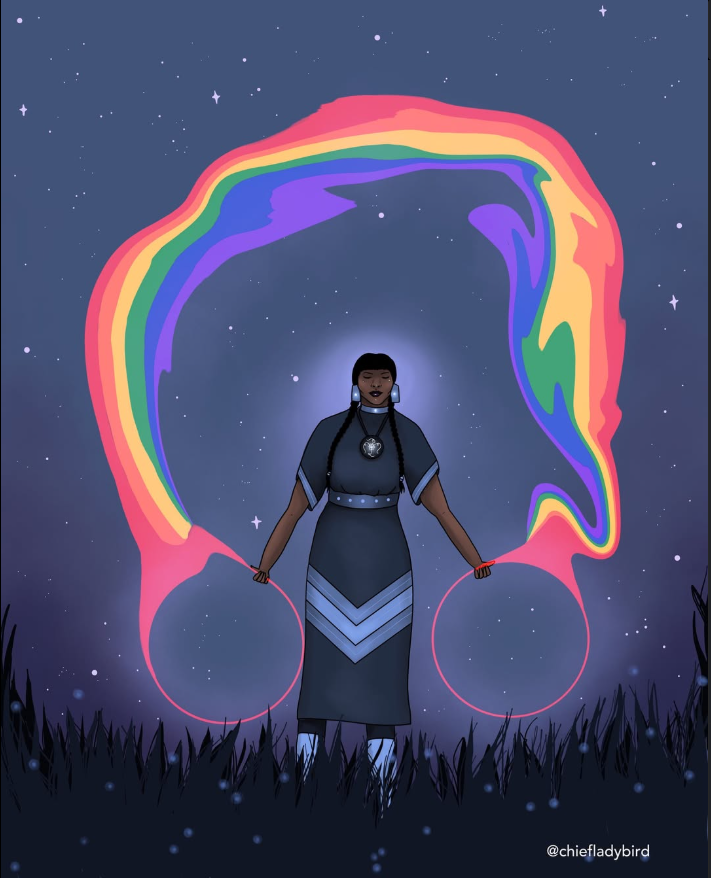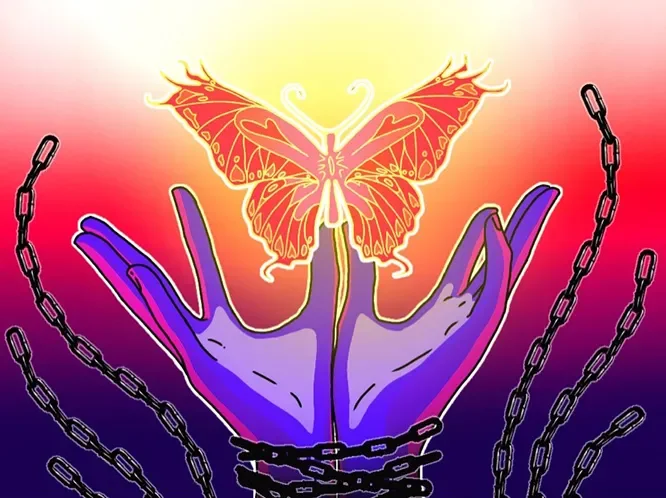
Understanding
2SLGBTQQIA+
Communities
2S – Two Spirit
L – Lesbian
G – Gay
B – Bisexual
T – Transgender
Q – Queer
Q – Questioning
I – Intersex
A – Asexual
Two Spirit
Two Spirit is a term used in some Indigenous communities to describe cultural, spiritual, sexual, and gender identities. It reflects Indigenous understandings of gender roles, spirituality, and a long history of gender diversity. The specific terms and roles for Two Spirit people vary by nation. However, not all Indigenous people with diverse sexual or gender identities identify as Two Spirit; many use the broader term LGBTQQIA+.
Before colonization, Two Spirit people were respected and included as valued members of their communities, often holding important roles such as healers and counsellors. Unfortunately, Western religious beliefs imposed through colonization condemned gender and sexual diversity. This legacy contributes to increased homophobia and transphobia in some Indigenous communities, leading many Two Spirit individuals to leave their homes, families, and culture.
Today, Indigenous communities are reclaiming the traditional roles and gifts of Two Spirit people as part of a broader healing and revitalization process.
(Source: Trans Care BC Provincial Health Services Authority)
Art by: Jackie Traverse
Gender-Based Violence and 2SLGBTQQIA+ Communities
Gender-Based Violence (GBV) in 2SLGBTQQIA+ communities is both stigmatized and neglected. When communicating with or about these communities, it’s vital to recognize their unique needs and barriers. Structural forms of GBV such as transphobia, homophobia, and biphobia are everyday realities that create additional challenges in public and private life.
Transphobia
Transphobia is intolerance or discrimination against transgender people—those whose gender identity differs from the sex assigned at birth. Transgender individuals face a higher risk of assault, sexual violence, and murder than others in the 2SLGBTQQIA+ community.
Examples of transphobic acts:
Jokes, teasing, and harassment targeting transgender people
Microaggressions
Physical and verbal assault
Denial of equal rights
Invasive questions about genitals or sexual practices
Using incorrect pronouns intentionally
Homophobia
Homophobia is the irrational fear or intolerance of lesbian, gay, or same-gender relationships. Negative attitudes and stereotypes fuel discrimination and violence against 2SLGBTQQIA+ people.
Examples of homophobic acts:
Jokes, teasing, and harassment
Microaggressions and derogatory slurs
Physical and verbal assault
Denial of equal rights
Assuming or dismissing someone’s sexuality
Biphobia
Biphobia involves fear, dislike, or prejudice against bisexual, pansexual, or people attracted to multiple genders. It often stems from harmful assumptions and stereotypes.
Common biphobic myths:
Bisexuality is “just a phase” or a stepping stone to homosexuality
Bisexual people are promiscuous or indecisive
Challenges Faced by 2SLGBTQQIA+ Communities
Members of these communities experience disproportionately high rates of discrimination, stigma, and violence, which affect access to employment, housing, healthcare, and social services. Many may hesitate to disclose their sexual orientation or gender identity due to fear of rejection or inadequate responses. Understanding this history of prejudice and trauma helps service providers communicate respectfully and inclusively.
Important Concepts
Sex vs. Gender:
Biological sex is based on physical characteristics such as genitalia, chromosomes, and hormones. Gender refers to identity, expression, and societal roles related to those traits. These terms are often mistakenly used interchangeably.
Gender Pronouns:
Using correct pronouns shows respect and affirms identity. Intentional misgendering is harmful and considered harassment. When unsure, neutral pronouns like they/them are respectful choices.Inclusive Language:
Stay informed about evolving terminology to avoid outdated or offensive terms. Using inclusive language signals care and respect for 2SLGBTQQIA+ individuals.


